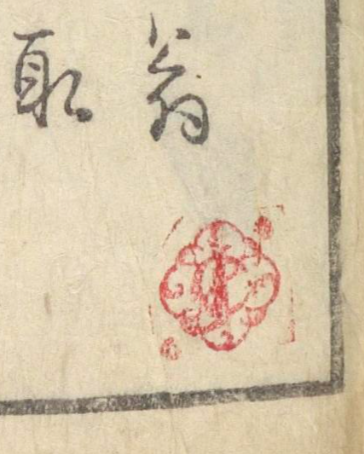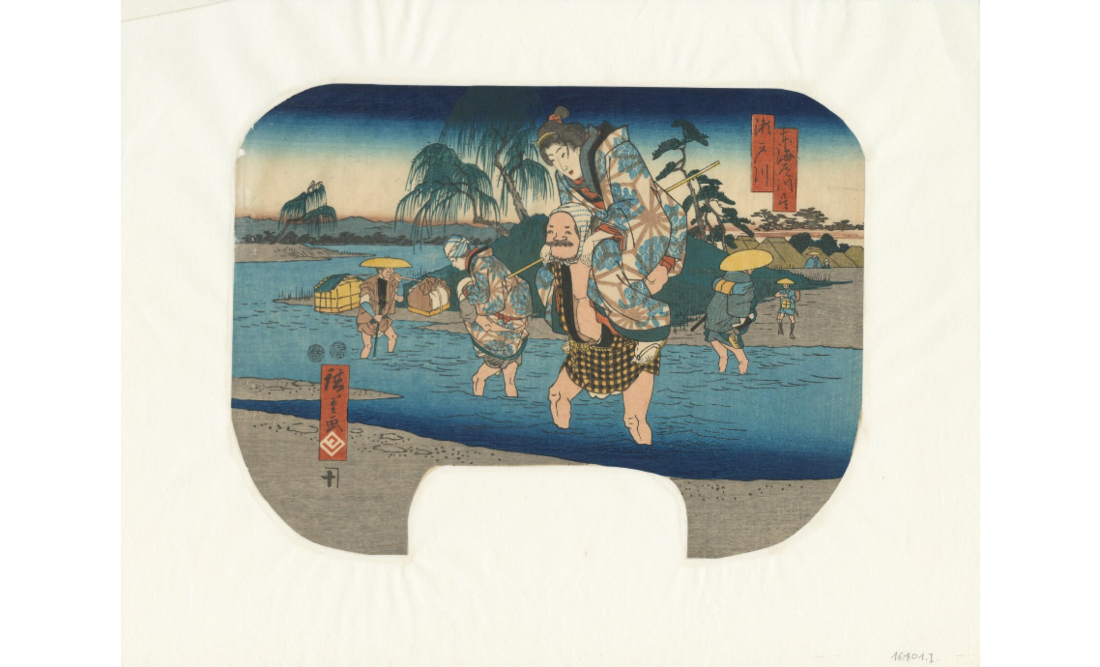
JAVAL Emile (EN)
Biographical article
Émile Javal was the son of Ernest Javal (1821–1914), a civil engineer, and Jeannette Merton (1833–1886). He married Caroline Olivier-Beauregard. He was born at 5, rue Sedaine, in the 11th arrondissement of Paris on 27 January 1864 and died in his home, at 26, avenue Charles Floquet, in the 7th arrondissement of Paris, on 31 May 1952 (Death certificates of the 7th arrondissement of Paris, year: 1952, reference no. 7D 237, certificate no. 675. Extract from the minutes of the birth certificates of the 11th arrondissement of Paris, 1864). Up to 1894, he worked as a lawyer, then continued in the magistrature (Pedone, A., 1912; AN, BB/6(II)/955; Annuaire rétrospectif de la magistrature XIXe-XXe siècles). Hence, he was deputy judge at the Lower Court of Vienne (15 December 1894); deputy judge at the Lower Court of Nogent-le-Rotrou (4 February 1897); judge at the Lower Court of Avallon (15 March 1901), and of Auxerre (27 April 1901); judge in Corbeil (19 November 1902); president of the Civil Court in Mantes (26 March 1910); then of Corbeil (18 October 1917); judge at the civil court of the Seine (25 September 1920); division president at the Civil Court of the Seine (5 March 1926); vice-president in the civil court of the Seine (16 January 1929); and lastly, Counsellor at the Appeal Court of Paris (18 December 1931).
He retired on 5 February 1934. He was also decorated several times: on 19 January 1912, as Officier d’Académie, then, on 31 July 1925, he was made a Chevalier de la Légion d’Honneur (AN, 19800035/554/63222). Certain publications mistakenly attribute the Émile Javal Collection to Louis-Émile Javal (1839–1907)—a homonym—, an engineer from the École des Mines and a famous ophthalmologist.

A collection based on Hiroshige and illustrated books
As Émile Javal left no written accounts about his collection or his love for Japanese art, it is difficult to reconstitute the context of his acquisitions, but they no doubt began right at the end of the nineteenth century, as certain books bear the stamps of Siegfried Bing (1838–1905) and Hayashi Tadamasa 林忠正 (1853–1906). Javal was already able to present a coherent ensemble of ukiyo-e prints during the exhibitions held between 1909 and 1914 in the Musée des Arts Décoratifs (Vignier, C., Inada H., 1973). One of the rare mentions of Javal as a collector features in the memoirs written by Raymond Kœchlin (1860–1931), who described him as a ‘specialist on Hiroshige who was one of the first to take an interest in illustrated books, which most other collectors still treat with disdain’ (Kœchlin, R., 1930, p. 26). This passion for Utagawa Hiroshige 歌川広重 is confirmed by a note from 1933: ‘Compiled over forty years, thanks to a perfect familiarity with Japanese art, remarkable flair, and evangelical patience, the collection of Counsellor Émile Javal is known and admired by “japonisants” from around the world. M. Javal has been, in particular, one of the very first Western collectors to take an interest in the work of Hiroshige, which until now has not been fully appreciated (…)’ (‘Vente japonaise’ (‘Japanese sale’), 1933, p. 21). The most remarkable aspect of this collection was his albums and Japanese illustrated books, which were of the finest quality. It appears that Javal advised Alexandre Halot-Gevaert (1861–1927), a Belgian senator and the Japanese Consul in Brussels, who was himself a collector of Japanese and Chinese art (Drouot sale, 23–24 November 1927), about the organisation of an exhibition in the Palais des Beaux-Arts in Brussels entitled ‘Exposition de Livres Japonais’ in 1911 (Bulletin de la Société Franco-Japonaise de Paris, 1912, p. 186). The latter published a conference held on this occasion (Halot, A., 1912), in which he thanked Javal. Only a very small part of the Javal Collection was presented to the public during his lifetime, in five of the six exhibitions about Japanese engraving held at the Musée des Arts Décoratifs, between 1909 and 1914, on the initiative of Raymond Kœchlin (1860–1931), vice-president of the Union Centrale des Arts Décoratifs, whose catalogues were compiled by Charles Vignier and Inada Hogitarō (Vignier, C., Inada H., 1973). Eighty-six of his prints from the eighteenth and nineteenth centuries in particular, those by Suzuki Harunobu 鈴木春信, Isoda Koryūsai 礒田湖龍斎, Katsukawa Shunshō 勝川春章, Torii Kiyonaga 鳥居清長, Ippitsusai Bunchō一筆斎文調, Kitao Shigemasa 北尾重政, Kitao Masayoshi 北尾政美, Tōshūsai Sharaku 東洲斎写楽, Kitagawa Utamaro 喜多川歌麿, Katsushika Hokusai 葛飾北斎, Totoya Hokkei 魚屋北渓, and Hiroshige—were presented there. They were dispersed at the first sale of the Javal collection in 1926 (Lair-Dubreuil, F., Vignier, C., 1926). Javal also owned a small collection of objects (bronzes and ceramics), in particular Chinese articles. He loaned two Chinese Han and Wei bronze objects to the ’Exposition d'Art Oriental’ held in 1925 (no. 354-355) and in 1934 donated to the French national collections seventy items of ‘Eastern or Far-Eastern ceramics’ (Brossier and Monnot, 2015, p. 164, donated on 6 December 1934, 20150044/77).
The sales of the collection
The Javal collection was dispersed in four sales held at the Hôtel Drouot between 1926 and 1934, which featured in richly documented, partly illustrated catalogues, compiled by the expert and dealer Charles Vignier (1863–1934), established at 4, rue Lamennais in Paris, and subsequently by his assistant, Marianne Densmore-Vignier, who was his niece. The two sale catalogues of illustrated Japanese books in 1927 and 1928 are precious documents as they add to our knowledge of Japanese publications from the Edo period, because they provide information about different print qualities in the same edition (first edition, reprints, etc.) and their collation, thanks to highly detailed comparisons with the copies in Théodore Duret’s collection (BnF, 1900) and those of the Hayashi Tadamasa sales (1st part, Durand-Ruel, 1902) Charles Haviland (Drouot, 1922–1923), Louis Gonse (1st sale, Drouot, 1924), Prosper-Alphonse Isaac (Drouot, 1925), and Ulrich Odin (Drouot, 1928), in particular with regard to Hokusai’s Manga editions. The collection that was sold included a total of 1,168 lots of ukiyo-e prints on sheets (including surimono, theatre programmes, and engravings in flat fan format), eleven lots of prints assembled in an album (representing about 550 engravings), mostly lots by Hiroshige (722), as well as several other types of works (five lots of Chinese prints and twenty-eight lots of Japanese drawings, paintings, and stencils). Japanese illustrated books represented 490 lots, or 1,602 volumes, which made it, after the Duret and Emmanuel Tronquois (1855–1918) collections, one of the largest assembled in France before the Second World War. They covered the entire history of pre-modern printing in Japan, from the Ise monogatari in the 1608 edition to Hiroshige’s books from the mid nineteenth century. The 1927 sale, advertised in the press as ‘the triumph of Japanese books’ (Monda, 1927), attributed high prices for the finest works, including the Sanjûrokkasen 三十六歌仙 (The Thirty-Six Poets) by Hon'ami Kōetsu 本阿弥光悦 (no. 1, 17,100 francs), the Genpo yōka 玄圃瑶華 (The Precious Flowers of the Mysterious Garden) by Itō Jakuchū伊藤若冲 published in 1768 (no. 65, 8,200 francs), and the Shōkadō gajō 松花堂画帖 (Shōkadō’s Album of Paintings) from 1804 (no. 107, 6,800 francs), which Gonse ‘designated a masterpiece of Japanese chromolithography’. Also worthy of note is the presence of the very rare first edition of the Mincho shaken 明朝紫硯 (1746) by Ōoka Shunboku 大岡春卜—the only one known to this day—, which had originally belonged to Siegfried Bing (1838–1905) (Marquet, C., 2007, p. 105; Marquet, C., 2008). This album, with its woodcut and stencil prints—the very first example of a book in colour in Japan—, was sold for a record price of 18,300 francs and was eventually acquired by the BnF in 1954 (cote Rés. Oe-270-f. 4o). There are also twenty-four of the very rare books by Hishikawa Moronobu 菱川師宣 (published circa 1677–1691)—the father of the ukiyo-e—and twenty-one by Nishikawa Sukenobu 西川祐信. Lastly, there are 128 kibyōshi, booklets of popular tales in images from the end of the eighteenth century with ‘yellow covers’, very few of which are held in collections.
The works held in public collections
The French national collections still hold a small number of works compiled by Javal, beginning with the Musée and the Bibliothèque des Arts Décoratifs, which on 18 December 1909 (UCAD. Archives. C4/43. Acquisitions UCAD, 1909) received the donation of a Japanese mask made of repoussé leather, nine prints of actors (in particular, Katsukawa Shunkō, Katsukawa Shunshō, and Hiroshige) and two engravings taken from a book by Moronobu (inventory nos. 16100 to 16102). The Musée National des Arts Asiatiques – Guimet possesses around fifty prints. Javal did give seven prints to the Louvre in 1912 (EO 2050 à 2056, 12 July 1912; Migeon G., 1929, p. 53; and Fimbel, Brossier, and Monnot, 2014, p. 61), then forty-two works by Hiroshige in 1921 (EO 2467 à EO 2508, 24 January 1921), taken from the series ‘Tōkaidō harimaze zue 東海道張交図会, Fifty-three Stations of the Tōkaidō, and One Hundred Views of Edo. In addition, thirty-one engravings were donated to or bought by the BnF in 1926 and in 1933. Paul-André Lemoisne (1875–1964), Chief Curator, noted in the Journal of the Département des Estampes, on 1 May 1926, that: ‘Monsieur Émile Javal has very kindly given us eleven Japanese prints, which, in addition to the sixteen bought at his sale, has enriched our collection with a small lot of works by Shunshō, Toyokuni, Hokusai, and Hiroshige’ (Lambert, 2008, p. 15, 222; Register of donations, no. 2658). Amongst these acquisitions at the sale of 4 March 1926 were five Hiroshige works sold for 785 francs (Grivel, M., 1984, p. 6, pl. 79, 82). Other engravings were acquired by the BnF at the Javal Sale of 1933 (Grivel, M., 1984, pl. 67, 116, 117, 118). Also worthy of mention is the execution in 1928 of eight engravings in a limited edition of 100 by a publisher in Kyōto, Satō Shōtarō, based on a series of previously unpublished drawings by Hiroshige entitled Tōtoyukimi hakkei (Eight Snow Scenes in the Eastern Capital), which Javal had shown to the latter in Paris in 1927 with permission to publish it. In a document attached to this publication and dated 1 July 1928, the publisher explained that these drawings by Hiroshige executed circa 1840–1847 and bearing a censor’s stamp were not printed during the artist’s lifetime, for some unknown reason (Bulletin de la Société Franco-Japonaise de Paris, 1929, p. 108). A copy of this publication was donated by Javal to the Département des Estampes in the BnF in 1929 (Registre des donations, no. 3071; cote: Rés. no. DD-3184-Fol). The books from the Javal Collection are now held in prestigious collections. There are seven books in the British Museum (1927 sale: no. 10, no. 107; no. 131, no. 152; 1928 sale: no. 13 and no. 228), and a dozen in the Gerhard Pulverer Collection held in the Freer Gallery of Art in Washington (The World of the Japanese Illustrated Books. The Gerhard Pulverer Collection, https://pulverer.si.edu). Lastly, ninety-seven volumes—including sixty-eight kibyōshi—were bought at the Javal sale in 1934 by the Belgian collector of prints and Japanese books, Hans de Winiwarter (1875–1949), and were then acquired in 1966 by the Bibliothèque Royale in Brussels (Kozyreff, C., 1992; Bawin, J., 2007, pp. 154–155). Five other books had already been bought by Winiwarter during the Javal Sales of 1927, 1928, and 1933 (Bawin, J., 2007, p. 299). Javal’s works bear a collection mark in the form of lozenges, with the interlocking initials ‘E G’.

Domaine public / CC BY-SA 3.0
Related articles
Personne / personne

Collection / collection d'une personne

